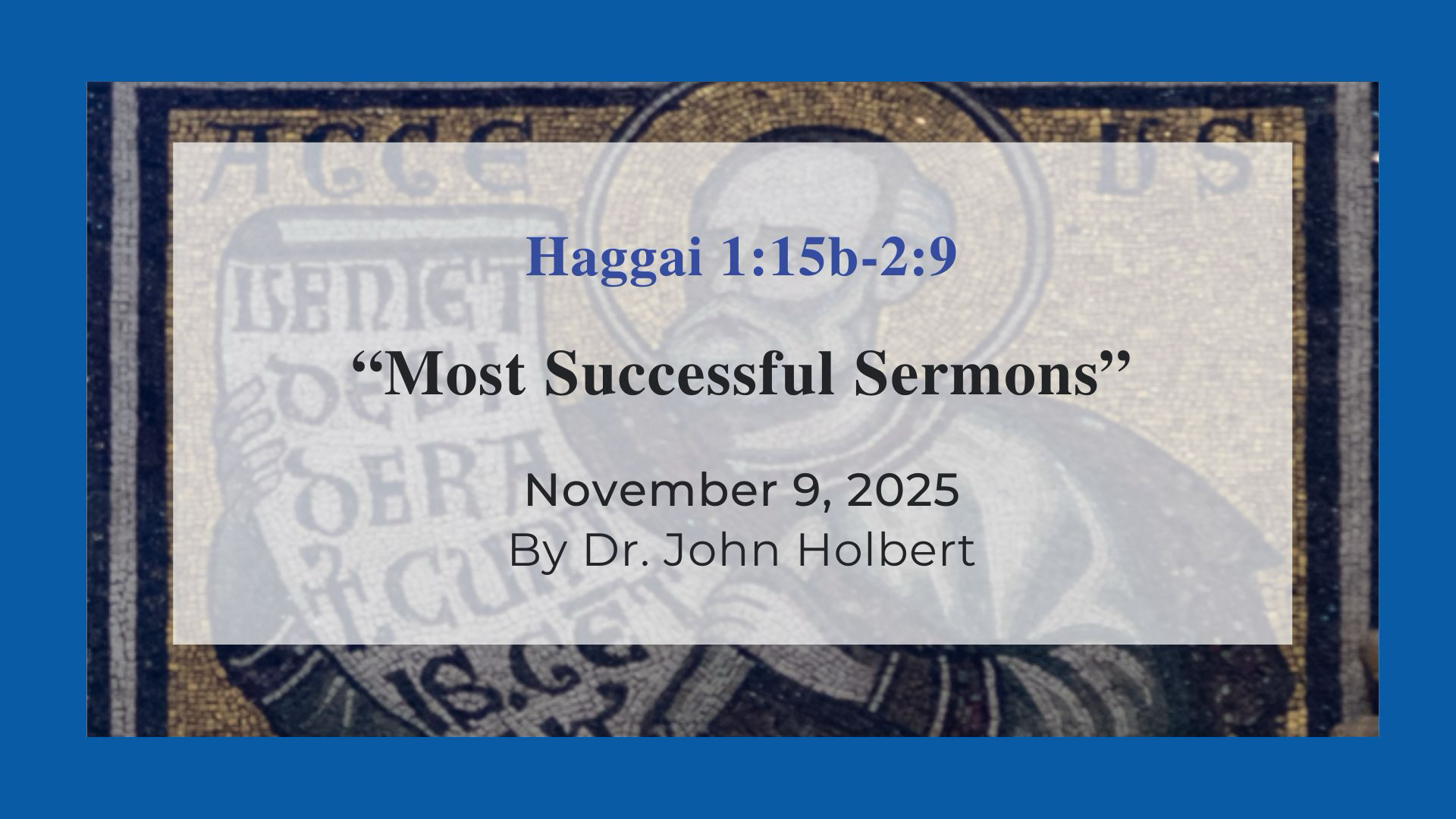Most Successful Sermons - Reflections on Haggai 1:15b-2:9, Pentecost 22, Year C
by John C. Holbert on Wednesday, July 2, 2025

Haggai is a unique Hebrew Bible prophet. We know precisely the scope and timing of his work in Jerusalem, quite unlike the generalized timelines of every other prophet in the Hebrew Bible. Haggai was active in the Persian province of Yehud (formerly Judah) from August 29 to December 18, 520BCE, hence about 3 1/2 months of prophetic work. And, it is quite clear what his prophetic objective was: the temple needed to be rebuilt and no more delay was acceptable. Perhaps one mystery might remain; the prophet we know as Haggai may have had another name, since the name means “feasts,” or more specifically “pilgrimage feasts.” The modern Muslim annual trek to Mecca is known as the “hajj,” a word very close to the Hebrew Chag, one of the celebrations in the ancient Israelite liturgical calendar. The fact that we know this prophet as “Haggai” seems a bit too good to be true, but that is the name we know.
Some historical context is important. The most significant date in the history of Israel/Judah is certainly 587/586BCE. It was then that the armies of Nebuchadnezzar of Babylon broke into the city of Jerusalem, destroyed both temple and palace, and took the major leaders of the city, primarily the king Zedekiah and his court, off to Babylonian exile. The future of the city, indeed the future of the nation, was dim at best. With its leadership gone, the society collapsed, the economic and cultural wheels fell off, and the center of Israelite hopes and dreams disappeared. For the next 50 years, Jerusalem and its environs grew dark.
But in 539BCE the entire Middle East changed when Cyrus of Persia came to Babylon, took the city and empire with little military effort, established a Persian government in the place, and allowed all Babylonian captives to return to their homelands. Many Israelites did go home, but not all; many remained in Persian Babylon, and founded a thriving Jewish community that was to last 1000 years. But back in Jerusalem, the future of the city and land continued to be grim.
Though the desire to rebuild the city and its temple was strong, and though work on the new temple began almost immediately in 538, those who had remained in the land during the exile were none to keen to aid that work. In fact, the “people of the land,” particularly those living in Samaria in the north, wrote a letter to the Persian court, warning them about the long and rebellious history of Jerusalem, suggesting that if the temple were rebuilt, Yehud would soon be a pain in the Persian side. The Persians soon put a stop to the rebuilding projects for the next 18 years (see Ezra 3:6-4:24 for further details). Then in the late summer of 520BCE, Haggai shows up in Jerusalem, chiding the inhabitants of the city, who have apparently given up the dream of the temple. He accuses them of living in "panaled houses,” clearly comfortable dwellings, “while this house (the temple) lies in ruins” (Hag.1:4). He goes on to say that the desperate state of the struggling economy and society in general is the direct result of the sorry state of the temple, once the symbol of YHWH’s powerful presence in the land. “You have sown much,” he cries, “and harvested little; you eat but you never have enough; you drink, but you never have your fill” (Hag.1:6). “These people say that the time has not yet come to rebuild YHWH’s house” (Hag.1:2), but Haggai says that it is far past time to rebuild.
A preacher should tread carefully here. There is no certain connection between a richly appointed new worship building, characterized by superb and well-led worship, and the wonderful presence and favor of God. In fact, it could well be said that people who spend their time with new fabulous buildings have misdirected their energies to their own comforts rather than focus attention on God’s call for justice and righteousness. Of course, it could be said on the other hand that a building project may call a community together the better to do those things called for by God. Haggai seems to imply that a rebuilt temple will automatically lead to a reconstituted community and culture. If so, he is certainly incorrect.
Still, all preachers can take heart from the great success Haggai experienced as preacher. He begins in late summer, and within only one month’s time, the work on the new temple has begun in earnest. Haggai 1:15 occurs on Sept.21, fewer than four weeks after the start of his work, and yet we are told that “YHWH stirred up the spirit of Zerubbabel and Joshua, and the spirit of all the remnant of the people; and they came and worked on the house of YHWH, their God” (Hag.1:14). It could be said that Jonah’s five-word sermon converted the world’s worst city Nineveh, constituting perhaps the most successful sermon in history, but Haggai’s four-week preaching series, leading all Judeans to work on the temple with real energy, must not be far behind. Surely, Haggai must be counted among history’s finest and most effective preachers.
